To ensure delivery of this newsletter to your inbox, please
add padi@padimembers.com to your email address book or safe senders list.
If this email is not displaying correctly, please view the web version.
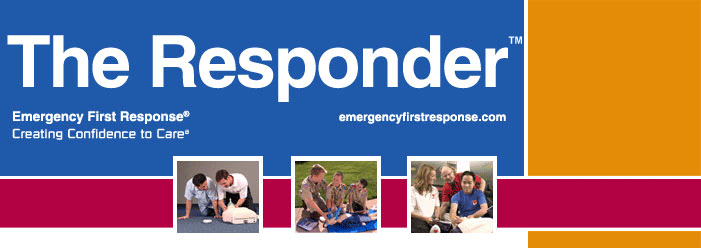
Dear Emergency First Response Instructor,
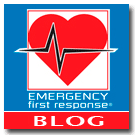 |
Emergency First Response is pleased to bring you the fourth quarter 2011 edition of The Responder. By scrolling down and clicking on the links below, you'll find the latest information on Emergency First Response programs.
Remember to monitor the EFR Blog regularly for information regarding training tips, industry news, real life accounts of Emergency First Response students in action and recent approvals.
Thanks for reading and please remember that answers to your questions are only a click away via email at Emergency First Response.
- Global Application of Newly Revised CPR & AED Course
- Marketing Savvy: Fill up your Training Roster, Generate Income and Enjoy the Great Indoors with EFR® Courses
- Revised EFR Course Material in Several Languages and the EFR Canada Workplace Program
- EFR Primary and Secondary Care Participant Exam Answer Key Changes
- Responders in Action
- Study Shows New CPR Device Improves Long Term Outcome
- CPR Smartphone Alert System
Global Application of Newly Revised CPR & AED Course
Emergency First Response has revised and updated the CPR & AED course materials to reflect the release of the 2010 International Liaison Council on Resuscitation Guidelines for Cardiopulmonary Resuscitation and Emergency Cardiovascular Care.
 In addition to a new fresh look, the course materials now have a broader global application. This program may be taught to anyone looking for a short CPR/AED course and, in many places throughout the world, it can also be used to meet workplace training and retraining requirements. For example, it meets OHSA workplace requirements in the United States. EFR Instructors may teach this course immediately without additional application.
In addition to a new fresh look, the course materials now have a broader global application. This program may be taught to anyone looking for a short CPR/AED course and, in many places throughout the world, it can also be used to meet workplace training and retraining requirements. For example, it meets OHSA workplace requirements in the United States. EFR Instructors may teach this course immediately without additional application.
The CPR & AED program includes the following skills:
- Skill 1 Scene Assessment
- Skill 2 Primary Assessment
- Skill 3 Adult CPR – Chest Compressions
- Skill 4 Adult CPR – Chest Compressions Combined With Rescue Breaths
- Skill 5 Adult CPR and AED Use
- Skill 6 Child CPR and AED
- Skill 7 Infant CPR
- Skill 8 Adult and Child Choking
- Skill 9 Infant Choking
By design, the CPR & AED course provides a competitive product in your marketplace. The participant manual and video on DVD are affordably priced and, because the participant manual includes a paper course completion card, no Course Completion Authorization envelope is required. Not only does this help you reduce expenses, it allows you to provide instant gratification following the course.
Course standards vary slightly between EFR offices to meet different workplace requirements worldwide. These differences are clearly outlined in the instructor guide.
Instructors teaching in the EFR Americas territory can offer this program as before and teach these four different courses using the same set of participant materials:
- Adult CPR
- Adult CPR & AED
- Adult/Child/Infant CPR
- Adult/Child/Infant CPR & AED
This lets you customize the program to your client's specific needs. Adult CPR alone, for example, may meet workplace requirements for one business, while a daycare facility may require Adult/Child/Infant CPR training for the staff. AED training is optional, but adds additional value to your program when included. Skill 8 - Adult and Child Choking - is required when teaching this program. Skill 9 - Infant Choking - is required when teaching child and infant CPR.
Teaching status Emergency First Response Instructors who are qualified to teach the Care for Children course are automatically qualified to teach this program. No further application is required.
Marketing Savvy: Fill up your Training Roster, Generate Income and Enjoy the Great Indoors with EFR® Courses
Are you looking to fill up your training roster and generate some pre-holiday income or is the weather in your part of the world making you wish for a nice, indoor place to teach? If so, EFR courses may just be the answer. Here are some ideas to help fill your training roster while enjoying the great indoors:
Offer Refresher Courses
Reach out to previous participants - those you issued completion cards to over the last 18 to 24 months - and remind them about the important changes to CPR. While CPR has been simplified, they need to know and understand the new methods - something they'll get with your refresher course. Visit the Emergency First Response Instructor Site to access an updated version of the Refresher Course cover letter and postcard you can use to contact past participants.Promote "One Responder per Family"
Reach out with the message that having at least one trained responder in each family can literally be the difference between life and death in a medical emergency. You may be able to acquire new participants with the Emergency First Response CPR & AED Course because it is less time consuming, but keep in mind that families will benefit from the full Emergency First Response Primary and Secondary Care Course. Also, families with youngsters really need the Emergency First Response Care for Children Course, so don’t hesitate to emphasize this as well.Sell the Revised EFR Course Materials
New course materials have been updated to include the Guidelines changes so you'll want to purchase them and make them available to participants. This is a good opportunity to generate income from recent participants who completed a course before the updated materials became available. Some may also be interested in a video on DVD if they didn't buy one when they took their course so they can see the new guidelines in action. All revised Primary and Secondary Care course materials, the revised CPR & AED Manual, video on DVD, Exam and Care-at-a-Glance Card are also in stock and available from your Sales Consultant. Updated Care for Children course materials will be available in early 2012.Get Marketing Support
Don’t forget that you can download a full complement of customizable marketing materials at the EFR Instructor Site. You can also order preprinted brochures from your Sales Consultant.
Contact Jo Walters at 800 729 7234 (US and Canada), +1 949 858 7234, ext. 2423 for additional information or assistance.
Revised EFR® Course Material in Several Languages and the EFR Canada Workplace Program
The English versions of the EFR Primary and Secondary Care Course and EFR CPR & AED Course materials have been updated to include the latest ILCOR Guidelines 2010. The English version of the EFR Care for Children Course material will be available by the second quarter 2012 and then translated materials will be available on the following schedule:
- EFR Primary and Secondary Care Course material in Dutch, French, German, Italian and Spanish will be available during the first quarter 2012 with the revised DVD following shortly after the printed material is released.
- EFR CPR & AED Course material in Spanish will be available during the second quarter of 2012.
- EFR Care for Children Course material in Dutch, French, German, Italian and Spanish will be available in the second half of 2012, again with the revised DVD following shortly after the printed material is released.
- The EFR Primary and Secondary Care Course, Canadian version, will also be updated to include Guidelines 2010 information and will be available by the third quarter 2012.
Please continue to use the existing versions of these materials and incorporate the relevant Guidelines 2010 information using the errata documents available at the PADI Pros’ Site and EFR Instructor Site until revised, translated versions are available in your language. Please contact the Training Department if you have any questions.
EFR Primary and Secondary Care Participant Exam Answer Key Changes
There have been several changes to the EFR Primary and Secondary Care Participant Exam answer key (product #71827 version 1.0), which are identified below. You can download a corrected (version 1.01) from the PADI Pros' Site and the EFR Instructor site.
For reference the following changes were made:
Primary Care Exam
Question 4 – answers should be A, C and D
Question 8 – answer should be False
Question 13 – answers should be A and D
Secondary Care Exam
Question 3 – answers should be A and C
Please contact the Training Department if you have any questions.
Crystal and Keith Gravitt - Emergency First Responders - Cumming, Georgia, USA
My husband, Keith, and I completed our training and had just attended a dive safety seminar at the Georgia Aquarium when we heard a loud thump behind us in the gift shop.
I turned around to find an older woman rolling onto her back, nearly onto my feet. We immediately went into action, called for bystanders to get medical help, kept her calm and convinced her to lie still. Once emergency staff arrived, they concluded she could sit up and she explained that she had tripped over a recessed light in the floor and fallen on her shoulder.
She was visiting with her family from Florida, but had gotten separated so she was alone when the fall occurred. She went to a local hospital and found that she had broken her shoulder. Speaking with her later, she mentioned that she was very embarrassed and if we hadn't encouraged her to lie still, she'd have probably done more damage to her shoulder by getting up and leaving.
I had no medical training prior to the Emergency First Response class and zero confidence in my ability to handle anything medical. I took the course so I could assist my husband or dive buddy in an emergency. But, knowing I ultimately helped a complete stranger without hesitation was an awesome realization. The fact that more than 30 people in the area stood staring, but doing nothing, was another realization and something I hadn't expected.
I can't say enough good things about all of the training we've had at SeaVentures in Alpharetta, Georgia and with Claude Smith as our instructor. We consider our dive training to be exceptional and had enjoyed increasing confidence in our dive skills, but gaining proficiency and confidence in our ability to aid ourselves and others made this course one of the most valuable investments we've made.
Shawna Cambell Jackson - Emergency Responder - White House, Jamaica
This year, Sandals Resorts International decided to have at least 80 percent of staff at each resort trained as Emergency First Responders. There were two reasons for this. First, to ensure that guests would always have a responder nearby. Second, to increase the number of responders in the surrounding communities. Since training started, numerous staff members have assisted with emergencies both at the resort and in the community.
The experience of Shawna Cambell Jackson of Sandals Whitehouse in Jamaica highlights the importance of this training:
On Monday, 29 August, I was having breakfast with my son, who was playing at the same time, when he choked on a piece of bread. At first I was scared, then I remembered the training. I took a deep breath and relaxed and then started the procedures I was taught in the EFR class. I picked him up turned him on his stomach and started to hit him on the back. The piece of bread suddenly fell out on the floor. I don't know how much to thank you for the training. And, I'd also like to thank Sandals for insisting that we all attend the Emergency First Response classes.
Jackson's son is one year old. Each of the resorts within the Sandals and Beaches family now have their own resident Emergency First Response Instructors.
Study Shows New CPR Device Improves Long Term Outcome
The preamble to the 2010 International Liaison Council on Resuscitation Guidelines for Cardiopulmonary Resuscitation and Emergency Cardiovascular Care mention that there hadn't yet been any evidence or scientific research studies to address the effectiveness of compression devices in CPR.
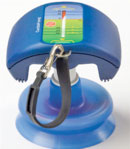 In at least one case, however, this has changed as Advanced Circulatory Systems recently announced promising results from a clinical trial showing that their CPR devices may protect a patient’s brain function after cardiac arrest.
In at least one case, however, this has changed as Advanced Circulatory Systems recently announced promising results from a clinical trial showing that their CPR devices may protect a patient’s brain function after cardiac arrest.
The study, supported by the United States National Institute of Health More and including 5000 patients based at seven sites located throughout the United States, compared CPR using the ResQCPR System against traditional CPR. It found that the new method offers improved protection to the heart and brain following cardiac arrest. The system combines the company's ResQPump active compression-decompression CPR device and the ResQPOD impedance threshold device.
The study also looked at the use of therapeutic hypothermia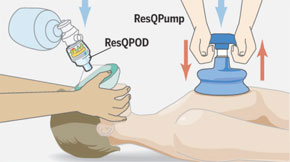 in conjunction with the ResQCPR System. This protocol was six times more effective in helping patients improve from poor neurological function at hospital discharge to good neurologic function after 90 days.
in conjunction with the ResQCPR System. This protocol was six times more effective in helping patients improve from poor neurological function at hospital discharge to good neurologic function after 90 days.
"These findings provide a new way to significantly decrease the number of patients with poor long-term neurological function, especially when the ResQCPR System is applied early during cardiac arrest," explained Dr. Marvin Wayne, principal author of the study in a press release.
Previously, Advanced Circulatory System had shown that the ResQCPR System triples blood flow to the heart and brain when used early to treat cardiac arrest.
Although this technology is still in testing and is beyond the scope of practice for lay rescuers, it does provide an interesting window on the future. Current lay responders only need to look back a few years for another example of technology that was once the province of Advanced Life Support - the defibrillator. That basic technology is now used by lay responders worldwide in the form of the automated external defibrillator.
In California, USA's San Ramon Valley, Fire Chief Richard Price was having lunch with staff members when an emergency medical vehicle pulled up next door.
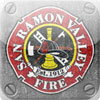
Because Price doesn't receive all medical calls on his pager, they had no idea that a medical emergency was taking place just feet away. After the incident, Price and his staff brainstormed ideas on how to prevent this from occurring again.
“It was surprising - disturbing I would say – that somebody could be in a great need so close,” Price said. “One of the information technology guys [at lunch] is a paramedic, I [have] a defibrillator in my car. We're all CPR trained and could have made a difference, but were unaware of it.”
This experience led the San Ramon Valley Fire Protection District staff members to develop a feature on their free Fire Department iPhone app to notify users in the area when someone requires CPR.
When someone calls 911 with a cardiac arrest, the dispatchers code “CPR assistance needed” into the computer-aided dispatch system. The system then notifies both first responders and those registered to receive CPR alerts to the emergency and provides the location of the victim. The app can also direct responders to the nearest publicly available Automated External Defibrillator via GPS.
The Fire Protection app is available as a free download and requires a device running iOS 4.2 or later. The district has also created the nonprofit Pulse Point Foundation to distribute the app to the nearly 200 public service agencies looking to deploy It in their communities.
This email has been sent from an unmonitored email address.
You can respond or change your email preferences by emailing Emergency First Response.
© Emergency First Response 2011.
Emergency First Response Corp.
30151 Tomas
Rancho Santa Margarita
California, USA 92688-2125
800 337 1864 or +1 949 766 4261
Email: info@emergencyfirstresponse.com
Web: http://www.emergencyfirstresponse.com